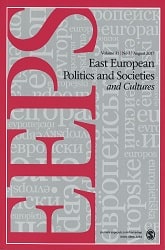Demobilization, Self-Mobilization and Quasi-Mobilization in Hungary, 1948-1987
Demobilization, Self-Mobilization and Quasi-Mobilization in Hungary, 1948-1987
Author(s): Elemér HankissSubject(s): Civil Society, Political history, Government/Political systems, WW II and following years (1940 - 1949), Post-War period (1950 - 1989), History of Communism, Sociology of Politics
Published by: SAGE Publications Ltd
Keywords: Hungary; 1948-1987; socialist states; power structures; pluralism; mobilization; mobilizational strategy; mobilizing people to some activity;
Summary/Abstract: Traditionally, and tradition means here the praxis of social and political sciences in the 1950s and early 1960s, East European societies were described and analyzed within the framework of a one-actor model, with the party-state acting and society obeying. There were variants of this model depending on how the political elite and its interactions with various social groups were defined. The elite could be restricted to a handful of people who governed the country from behind the bulwark of a personal cult. Alternatively, it could be understood as a relatively large group of political and economic leaders who surrounded themselves with expert consultants and who ruled in the name of a large social group which has been called by many the "new class." Views also varied about whether this sole political actor was free to act as it wanted to, or to what degree it acted under various external and internal constraints, but the fact remained that only the party-state was regarded as an active participant in the sociopolitical game. [...]
Journal: East European Politics and Societies
- Issue Year: 03/1988
- Issue No: 01
- Page Range: 105-151
- Page Count: 47
- Language: English
- Content File-PDF

